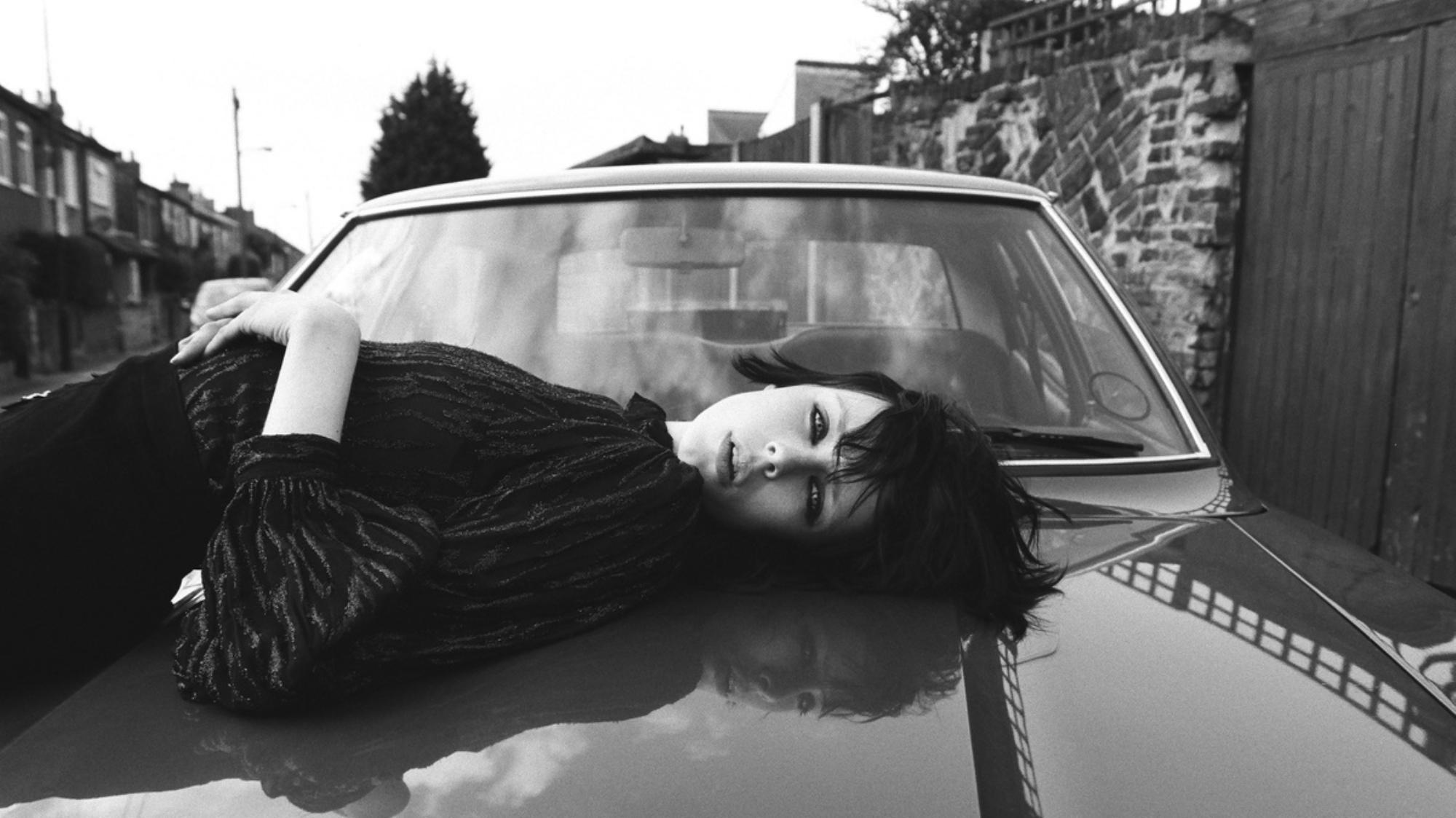i-D Hair Week is an exploration of how our hairstyles start conversations about identity, culture and the times we live in.
Few hairstyles are as contested as the mullet. It’s a ‘do characterized by a short cut in the front and sides with a longer trail of hair in the back. “Business in the front, party in the back” is a phrase associated with mullets made popular by the 2001 film Joe Dirt. Over the decades, mullets have garnered a reputation for being unattractive, gauche, and even a signifier of lower socioeconomic statuses. But the unequally layered hairstyle has developed a new connotation in recent years—lifestyle magazines and blogs have been covering the rise of something called the “fashion mullet.”
The fashion mullet is a subtler version of the hairstyle, often incorporating bangs and flowing layers. In 2013, legendary hairstylist Guido Palau gave Marc Jacobs models edgy mullet cuts for Fashion Week’s fall runway show, successfully reviving the long forgotten cut from the 70s and 80s. The following Jacobs campaign starred budding British supermodel Edie Campbell who further popularized the look with her bold, jet-black mullet. “Steven Meisel asked me to do a pucklike cut on Edie for a U.S. Vogue story on punk,” Palau told The New York Times for a Fashion & Style interview. “She took on the look right away and it became a part of her. She made it feel current.”
Today, the fashion mullet is cropping up on models like Manami Kinoshita in the form of a blunt frontal shave, the colorful pop of tastemaker Sita Abellan, or the natural locks of Belgian Instagram sweetheart Yana Bovenistier. In music, Die Antwoord’s Yolanda Visser sports an extreme peroxide blonde mullet complete with shaved sides and teased volume.
A post shared by sita abellan (@sitabellan) on Jun 2, 2017 at 11:30am PDT
The inspiration for the fashion mullet is evident in the sexual revolution of 70s rock icons. Patti Smith, Rod Stewart, Joan Jett, and even Paul McCartney wore their hair in the defiant short-in-the-front, long-in-the-back look. David Bowie’s most iconic persona, Ziggy Stardust, made the mullet a moment in music history with the iconic red-tinted take on the style. Chrissie Hynde, the frontwoman of punk band The Pretenders, performed in a messy mop of mullet that embodied her feminist attitude.
Carrying on the counter-culture spirit of the 70s, the modern mullet is a protest against conventional beauty. Though recently lauded as an edgier version of the bob in fashion, the public is still at odds with the haircut associated with the tackiness of America in the 80s and 90s (sorry, Billy Ray Cyrus). When Rihanna donned a mullet in 2013, publications ridiculed the Barbadian singer’s choice, publishing tabloid headlines about how “terrible” it looked and questioning her judgment. When Campbell initially changed her look, she was met with disapproval. “My boyfriend (Otis Ferry) was horrified initially,” she told i-D. “I mean really horrified… It was short, jet black and properly mullet like. He likes pretty blonde girls, so he was like, ‘this is a criminal act, who’s done this to you? This is a nightmare!'”
At the 2016 Grammy Awards, Zendaya rocked a Bowie-inspired sandy blonde mullet on the red carpet. An onslaught of online taunting ensued, which prompted the Disney star and singer to discuss the importance of self-esteem in an interview with Elle. “Some would say the mullet didn’t work out. But to me, they were talking about it, so I’d say it worked out,” she said. “I think we can’t allow ourselves to get caught up in other people’s opinions of ourselves because then we’re never going to progress, we’re never going to go forward. We’ve got to do what we want to do even if people don’t like it.”
A post shared by Zendaya (@zendaya) on Feb 15, 2016 at 5:09pm PST
When celebrities who are revered for their beauty are publicly humiliated for trying unconventional hairstyles, it reveals society’s obsession with policing women for straying from the “pretty” category. Because the mullet has been ingrained in popular culture as quintessentially “ugly,” it’s an assault on gendered beauty standards and the male gaze.
For these reasons, the mullet has been a staple in queer subcultures long before it took hold of Marc Jacobs’s runways. For lesbians and nonbinary folks, the mullet is a signifier of their sexual orientation. In sociologist Rose Weitz’s book, Rapunzel’s Daughters: What Women’s Hair Tells Us About Women’s Lives, she details the evolution of lesbian hairstyles from 50s “duck ass” style (worn famously by Elvis Presley’s early days) to the full-blown mullets in the 80s. “Hairstyles like these are in-your-face statements not only of lesbian identity but also of lesbian pride,” Weitz states. Comedian Cameron Esposito even jokes in a BuzzFeed video that if you want people to know you’re a lesbian, she’d recommend a “side mullet.” For queer subcultures, mullets are not only a style, but an expression of inclusion and identity.
Whether it’s a subversive fashion trend or an integral part of one’s identity, the mullet expertly defies the male gaze and rallies against gendered beauty standards.
Credits
Text Braudie Blais-Billie
Photography Marlene Marino
Fashion Director Sarah Richardson
Hair Martin Cullen at Streeters.
Make-up Miranda Joyce at Streeters using Chanel Perfection Lumière Velvet and spring/summer 14.
Set design Emma Roach at Streeters.
Photography assistance David Gilbey.
Styling assistance Alice Lefons, Cristina Firpo.
Production Susie Babchick/RSA Photographic.
Model Edie Campbell at Viva London.
